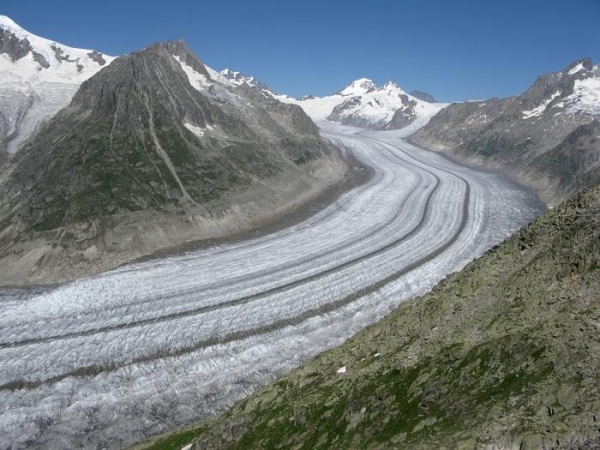Even if greenhouse gas emissions were to cease altogether, the volume of ice in the European Alps would fall by 34% by 2050.
Even if greenhouse gas emissions were to cease altogether, the volume of ice in the European Alps would fall by 34% by 2050. If the trend observed over the last 20 years continues at the same rate, however, almost half the volume of ice will be lost as has been demonstrated by a new international study, co-authored by GIUZ scientists.
By 2050, i.e. in 26 years' time, we will have lost at least 34% of the volume of ice in the European Alps, even if global warming were to stop completely and immediately. This is the prediction of a new computer model developed by scientists from the Faculty of Geosciences and Environment at the University of Lausanne (UNIL), in collaboration with the University of Zürich, ETHZ and the University of Grenoble. In this scenario, developed using machine-learning algorithms and climate data, warming is stopped in 2022, but glaciers continue to suffer losses due to inertia in the climate system. This most optimistic of predictions is far from a realistic future scenario, however, as greenhouse gas emissions continue to rise worldwide.
In Reality, More Than Half the Volume of Ice Will Disappear
Another more realistic projection from the study shows that, without drastic changes or measures, if the melting trend of the last 20 years continues, almost half (46%) of the Alps' ice volume will actually have disappeared by 2050. This figure could even rise to 65%, if we extrapolate the data from the last ten years alone.
Read more at University of Zurich
Image: The Aletsch glacier in 2009, in Switzerland (Credit: UNIL - Guillaume Jouvet)




